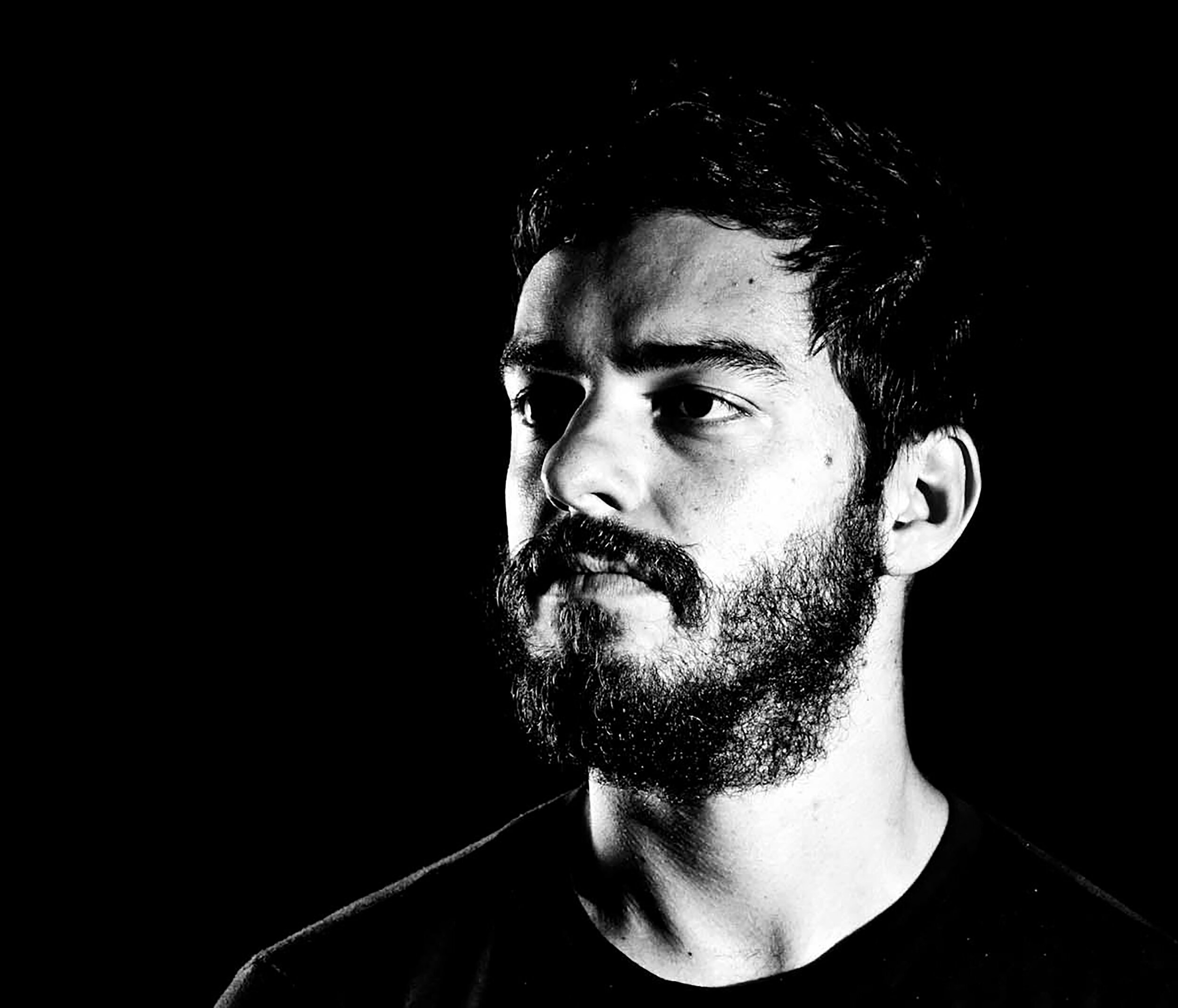To Feel, To Feel More, To Feel More Than
The future remains uncertain, but the past persists. The abundance, excess, and indulgence of images, and access to information that simultaneously leaves us sick, overwhelmed, and uneasy, also brings us further away from oblivion. Despite the fiction of borders, race, gender, and time that many would have us maintain through both overt violence and covert forms of soft power, our interconnection to each other—the continuum of care that brings us together across generations—is visible through the ways we commit to each other through our screens.
This program, developed as a final output of the Flaherty NYC programming team comprised of Alia Ayman, Devon Narine Singh, and Suneil Sanzgiri, looks at how media ecosystems, digital detritus, and cultural memory are navigated across boundaries, identities, and history. Can remembrance fix a broken world? If not only by an act of saving the memories from being encompassed by that world, but acting as beginnings for other possibilities?From children’s drawings collected by Frantz Fanon during the Algerian war, sci-fi allegories on toxicity, swimming, and e-waste, to a 1908 film effectively envisioning our obsessions with Zoom calls and Snapchat filters, these films question the human, our relationship to the natural world, to time, to technology, and to each other. Our title comes from a passage from Fred Moten’s Black and Blur, which asks if anything still remains of the human, and how we might enact that remainder.
PROGRAM 1
Shell Revolution (2018) 1’, by Ho Rui An
Core Dump (2018) 15’, by Francois Knoetze
WHALES SPF 50 (2017) 7’, by Wickerham & Lomax
Tattva (2018) 4’ , by Kalpana Subramanian
Long Distance Wireless Photography (1908) 6’, by Georges Méliés
Bedford Cheese (2016) 19’, by M. Woods
WARNING: This video may potentially trigger seizures for people with photosensitive epilepsy. Viewer discretion is advised.
The Wind (2019) 3’, by Miranda Javid
Kink Retrograde (2019) 18’, by Bassem Saad
A Gregarious Species (2021) 7’, by Natasha Raheja
TRT: 80 mins
Shell Revolution (2018)
Shell Revolution is a 3D animation that tracks the transformation of the Shell logo over the years, as it morphs from a naturalistic seashell to its current graphic form—an evolution that succinctly encapsulates the oil industry’s growing alienation from and destruction of the natural world.
Ho Rui An
Artist and writer working in the intersections of contemporary art, cinema, performance and theory. Working primarily across the mediums of lecture, essay and film, he probes into the ways by which images are produced, circulate and disappear within contexts of globalism and governance. He has presented projects at the Asian Art Biennial (2019), Gwangju Biennale (2018), Jakarta Biennale (2017), Sharjah Biennial (2017), Kochi-Muziris Biennale (2014), Van Abbemuseum, Eindhoven (2018), Haus de Kulturen der Welt, Berlin (2017), Jorge B. Vargas Museum and Filipiniana Research Center, Manila (2017), NTU Centre for Contemporary Art Singapore (2017) and Para Site, Hong Kong (2015). In 2019, he was awarded the International Film Critics’ (FIPRESCI) Prize at the International Short Film Festival Oberhausen, Germany. In 2018, he was a fellow of the DAAD Berliner Künstlerprogramm.
Core Dump (2018)
A core dump is a recorded state of the working memory of a computer at specific moment in time. If a crash occurs, the computer is able to recall this ‘imprint’ of its previous state as a means to debug and recover. This strangely poetic ‘memory’ of a computer forms the basis of Core Dump (2019), a work in four chapters, set in Dakar, New York, Shenzhen and Kinshasa, which extends the metaphor of a ‘crash’ to the impending breakdown and unsustainability of a global Capitalist system, an ‘Invisible Empire’, characterised by the glut of excess and its fascination with hypermodernity masquerading as progress.
Francois Knoetze
Knoetze is interested in the connections between social histories and material culture. His roaming costumed performances and videos pick at the socio-spatial force-fields that attempt to rigidly order the contaminated, folded, and entangled worlds of people and things.
Link to website
WHALES SPF 50 (2017)
The evolutionary track becomes a place from which stereotypes, swimming, and intimacy ricochet off experience about surface, sound, and theme to bemoan the end of a relationship. Whales SPF 50 is the first in a series of commissioned videos and will be featured on the poetry EP XXIV Humans early next year. In the series, anthropological concerns are moved from cold, object, and observation driven models to ones of emotional and spiritual connection. The concepts originate from an attempt to find a form that can oscillate between the macro and micro with ease and still retain an emotional resonance. The video navigates notions of intimacy in correlation to biological concepts such as: shelter, evolution, adornment, and warfare.
Wickerham & Lomax
Wickerham & Lomax are an interracial collaborative making gay work in a dangerous city. The duo is integrated by Baltimore-based artists Daniel Wickerham (b. Columbus, Ohio, 1986) and Malcolm Lomax (b. Abbeville, South Carolina, 1986). Their practice is based on the accelerated exchange of frivolous information, gossip, and codified language that crystallizes into accessible forms in hopes of giving dignity to that exchange.
Tattva (2018)
'Tattva' (in Sanskrit), alludes to 'thatness' and the fundamental elementality of all material existence. This film explores interior and imagined landscapes of the matter and media, engaging nanoscopy, ethnography and cinematic projections. It seeks to transcend the scientific gaze through a dissolution of boundaries between human and non-human, art and science, self and the other and ultimately, matter and spirit.
Kalpana Subramanian
Kalpana Subramanian is an artist-scholar and Ph.D. candidate in Media Study at the State University of New York at Buffalo. Her films and publications explores philosophies of media and embodiment, investigating the poetics of light and breath in media. Her films have been exhibited at venues including the National Gallery of Modern Art Mumbai and National Museum (India), Yamagata International Documentary Film Festival (Japan), Interfilm Berlin, Toronto International Film Festival, Digital Anthropologies (France), Olhar de Cinema (Brazil), Wildscreen UK, ULTRACinema MX (Mexico), Antimatter Media Arts and Toronto International Film Festival (Canada). She was a Fulbright Fellow at the Brakhage Center (University of Colorado Boulder (2015-16), a UK Environmental Film Fellow (2006). She also curates experimental film programs.
Link to website
Bedford Cheese (2016)
"Outside on suburb streets there are gun shots so we stay inside and dream of a place called Bedford Cheese, where the hot hipsters traffic their cool. Trying to find enough print-out porn. It gets crinkled and oily and loses its sex. Instead, I make a cancer mess that grows out of my throat like a plastic bag. I use a McDonald's bag to clean up all my pills. I want money to come from nothing; money has nothing in it, but I can't make the paper. But one day I'll live in flames."
Michael Woods (M. Woods)
Disassociative Productions are configured as motion picture, photography, writing, VR, music, social media, performance, parasitic events, guerrilla projections, conversation, protest, charity, prose, activism, and conspiracy theory.
The Wind (2019)
The rigidity of a historical fact rolls by like clouds, or maybe like cloud-computing. Digital landscapes like desktops, trash cans, and cursors flatten the sensation of what tangibly remains: the invisible pleasure of wind on skin.
Miranda Javid
Miranda Javid is a writer, animator, and art-educator with a Masters in Fine Art from the University of California Irvine and a BFA from the Maryland Institute College of Art. Her drawings have shown at Commune1 in Cape Town, S Africa, The Baltimore Museum of Art, The Mint Museum of Art in North Carolina, and Vox Populi in Philadelphia, PA. Her films have shown nationally and internationally at festivals like the Ann Arbor Film Festival and Cutout Film Festival in Mexico City. She is a Kenan Fellow, a Sherman Fairchild grantee, and a recipient of the Nancy Harrigan Prize, given through the Baker Artist Fund. Currently, she lives in California, where she spends her time teaching animation at CalState Los Angeles and takes long walks when she's trying to think of narrative ideas. Also, she keeps bees.
Kink Retrograde (2019)
Kink Retrograde presents an allegory whose protagonists live in a city presided over by shocks that come to resemble the apparent retrograde motion of celestial bodies: cyclical and seemingly moving backwards. In anticipation of imminent confrontation, the intoxicated characters become conscious of the social contract being always already void; they must devise a new and transparent contract aware of its own abjectness, risk, and deviance—one of total kink.
Bassem Saad
Bassem Saad is an artist and writer born on September 11th and trained in architecture. His work explores objects and operations that distribute violence, pleasure, welfare, and waste. Through video, sculpture, and writing, he investigates and records strategies for maneuvering within and beyond governance systems.
A Gregarious Species (2021 WIP)
What do bugs and borders have to do with each other? Bringing together mobile phone videos of transboundary gregarious locust swarms, political rallies, and scientific webinars, this found-footage, experimental video raises questions about the selective porosity of borders amidst environmental crisis, farmer insecurity, and nationalism in South Asia.
Natasha Raheja
Natasha Raheja is a documentary filmmaker and social scientist working as an Assistant Professor of Anthropology and Performing and Media Arts at Cornell University. Her current writing and film projects explore questions of migration, belonging, and citizenship across the India-Pakistan border. She received her PhD in Anthropology from NYU (2018), and her BS in Biology and MA in Asian Cultures and Languages from UT Austin (2008; 2010). Natasha is the director of Cast in India, an observational portrait of the Indian metal workers who manufacture New York City manhole covers.
Flaherty NYC Programmers-in-Residence
The programmers for this series hail from the beautiful diasporas of Egypt, India and the West Indies, and in turn their program reflects questions of emergence and opacity, highlighting works by underrepresented voices, canonic names, and promising new filmmakers that amplify characteristics of what writer Sylvia Wynter called “a new poetics of the propter nos”—a radical reversal in the belief that instead of the world being created for “us,” we were, in a sense, created for each other.
Alia Ayman Alia Ayman makes and curates film and video. She is a cofounder of Zawya, a Cairo-based arthouse cinema and a doctoral student at NYU, where she is working toward a dissertation on decoloniality, difference and the global circulation of documentary images. She is currently a co-programmer for the 2021 edition of Images Festival in Toronto and a programming advisor for the Berlinale Forum. Alia lives and works between Cairo, Philadelphia and New York City.
Devon Narine-Singh is a filmmaker and curator. His works have screened at Microscope Gallery, UltraCinema, The New School and The Trinidad and Tobago Film Festival. He has presented screenings and presentations at NYU Cinema Studies, UnionDocs, The Film-Makers Coop, and Maysles Cinema. He has a BFA in Filmmaking from SUNY Purchase. He is currently pursuing his MA in Screen Studies at Feirstein Graduate School of Cinema at Brooklyn College.
Suneil Sanzgiri is an artist, researcher, and filmmaker. His work spans experimental video, animations, essays, and installations, and contends with questions of identity, heritage, culture and diaspora in relation to structural violence. He graduated from the Massachusetts Institute of Technology (MIT) with a Masters of Science in Art, Culture and Technology in 2017. His film At Home But Not At Home made its World Premiere at the International Film Festival Rotterdam, in January 2020, with a nomination for the Found Footage Award. His follow-up film Letter From Your Far-Off Country made its world premiere at the New York Film Festival in the fall of 2020, and was entered into the Ammodo Tiger Shorts Competition at IFFR in 2021. Sanzgiri’s work has been screened at festivals and galleries nationally and internationally. Sanzgiri was a 2016 resident of the SOMA program in Mexico City and will be a resident of the Pioneer Works Studio Residency in Spring 2021.
















